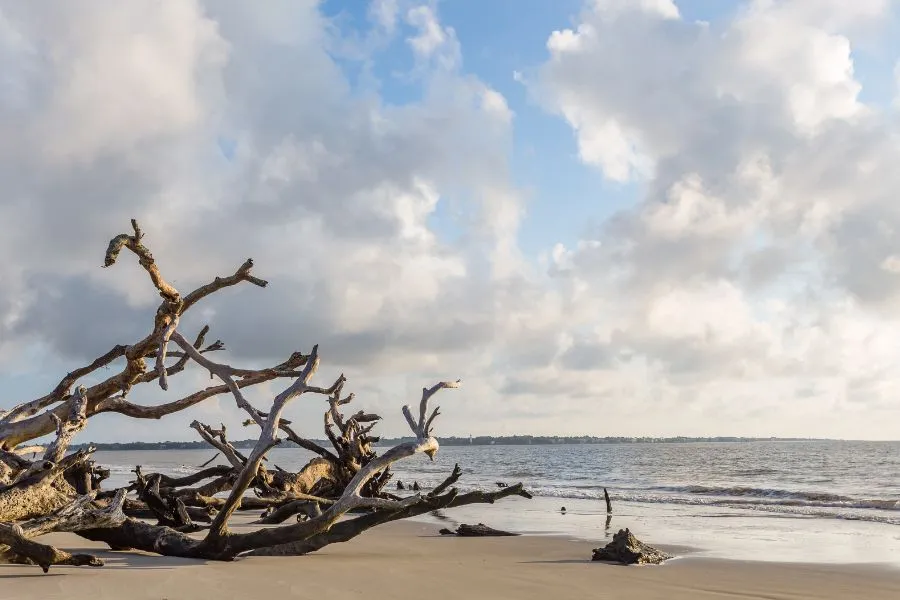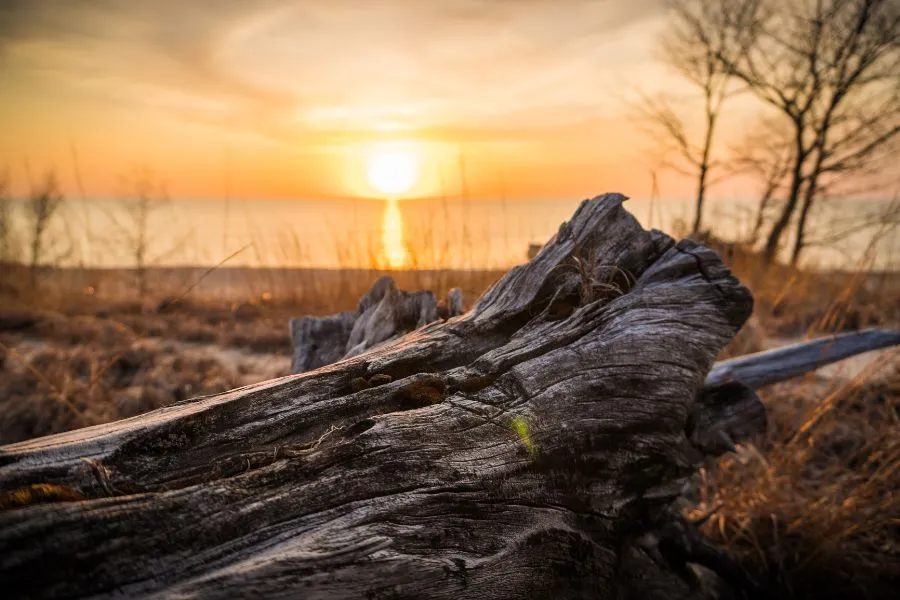Driftwood can be used to decorate or make beautiful objects such as furniture. Finding and preparing driftwood can also be a good business. The question here is, however, how to find driftwood? And where is the best place to find driftwood?
Generally, you can naturally find driftwood on the beach, riverbank, lakes, parks, and forests. You may also find driftwood in flea markets, aquariums, or souvenir shops. You may also source unique types of driftwood online, locally, or overseas. You can find local or foreign driftwoods for your use or resell for profit.

This article discusses where the best place to find driftwood is. We also discuss locations around the country where you can find driftwood for free and the types of driftwood you can find.
Where Is the Best Place To Find Driftwood?
You may naturally find driftwood in two ways or source it from others. You can get driftwood naturally at the beach, riverbank, lakes, parks, and forests. If you intend to source from others, you can hunt for it in the flea market, aquarium shops, souvenir shops, or online.
Driftwood can be found in many places. In fact, it is one of those things that you never really notice being lying around until you actually hunt for it.
Beach
Beaches are a great place to start hunting for driftwood because beaches tend to be public, and much driftwood washes up to the beach. Rivers or lakes tend to be private property, making driftwood hunting at these places trespassing.
You may either approach a beach driftwood hunting session as a one-person show. Arrange a day to drive along a coastal road while keeping your eyes on any large driftwood. You may also walk along the beach.

If you prefer a collaborative approach, you can bring your family, and friends and team up to hunt for some. In fact, it is not weird to organize a beach day with your friends and family and then have a driftwood hunting competition.
No matter your choice, ensure you bring a bag to keep the wood you find.
Riverbank and Lake
Aside from beaches, you can also find driftwood floating and hanging on riverbanks and lake shores. In fact, driftwood from freshwater sources may be more suitable for aquariums, as they tend to not be overloaded with salt and minerals.
The issue with hunting for driftwood in riverbanks or lakes is that, at times, riverbanks and lakes may be part of private property. If you simply wander around, you could be trespassing and extracting resources from private land.
As such, you may need to check and ensure the location you intend to pick driftwood from is public land.

Another concern is that riverbanks or lake shores can host many types of animals, which may be harmful if you are not careful. Crocodiles or alligators may lurk around riverbanks looking for animals for food, which means it could be dangerous.
Parks
We are talking about parks in front of your house or any of the public parks around. National parks are usually off limits and usually do not allow you to take anything out from the park except yourself and trash.
Usually, public parks contain aged trees, and at times these trees may have branches that have fallen off and are drying and rotting away. You may also find some sun-aged trees. These woods may form great driftwood.
Soak this wood in salty water for two to three weeks to help it absorb some salty moisture. You bake the wood for about three to four hours in an outdoor grill around 400°F (205°C). This treatment process will make the wood become closer to driftwood.

Forests
You can also hunt for some driftwood in a forest. In fact, it may be easier to find driftwood in forests than on riverbanks or beaches, as these driftwoods usually fall off their trees and then rot away. And yes, forests are full of trees.
The challenge here is to know which driftwood you are picking. As many trees are in the forests, you want to pick up good driftwood that can last long.
In general, you may find two major types of driftwood in a forest: softwood and hardwood. Softwoods tend to come from trees with cones, such as cedar, pins, or redwood. These soft trees may also have sap.
Driftwoods from these trees tend to rot faster, and the sap may disturb the chemical balance of your aquarium, so soft driftwoods are generally a bad idea.
Hardwood trees have broad leaves, such as maple, oak, beech, balsa, and walnut. These trees are harder and may rot slower if submerged in long-term water. As a result, they make good driftwood.
Approach driftwood hunting in forests similar to the beach. You may go alone or organize a trip with your friends and family. Carry a bag just in case you find some gem and want an easier way to carry the wood around.
Flea Market
Not all people live near rivers, lakes, or a beach. If you intend to look for driftwood, you may need to source it from other people. You may also prefer to simply buy driftwood from other people.
If you are in the same situation, start with the flea market. This is because flea markets may offer you a good bargain. As a start, simply google ‘flea market near me and check out if they have driftwood for sale. You may just be lucky enough that day to encounter a seller selling nothing but driftwood.
Aquarium Shops
Many aquarium shops know that many fish keepers want driftwood to decorate their aquariums. As such, they usually also offer driftwood for sale in their shops.
Many of these driftwoods are also pre-treated and soaked, meaning you can buy these driftwoods and immediately add them to your aquarium.

This means you spare yourself the trouble of soaking the wood in water to make it sink or boiling it to remove tannins and kill off any germs, spores, and fungi.
READ MORE: Why Is My Driftwood Not Sinking?
The driftwood may be a little expensive if you buy it here. However, you can spare yourself the worry of seeing your driftwood turning black or white, which may be a sign of infection.
Souvenir Shops
Souvenir shops may, at times, offer driftwood for sale. In many cases, these souvenir shops also pick up driftwood from their local area and then sell it in their shops.
These driftwoods may or may not be pre-treated, as they are intended as souvenirs, not as decoration in aquariums. Some of these driftwoods may also come with additional finishing, such as wood oils or shellac, which may make them not suitable for aquariums.

As such, you may need to check with the shopkeeper if any driftwood you found has been treated with chemicals. When possible, buy only untreated driftwood, and spend time treating the wood yourself. You may need to boil and soak the wood yourself to treat it.
Online
If all else fails, you can always go online. Places like Etsy or Amazon may offer all types of driftwood for sale there. Shopping online may be a good option if you do not live near water to get natural driftwood. Shopping online is also good if you do not want to spend time visiting flea markets and souvenir shops.
Another great place to try is Facebook. There are numerous pages and groups around Driftwood and even some of them are directly for selling and buying. Like this one Driftwood for Sale – Buy, Sell, & Trade.
When you shop online, you can also shop for many types of driftwood, such as pre-treated driftwood or treated driftwood. In these online shops, you can also find rather exotic and high-quality driftwood, such as Malaysian or Mopani driftwood.
The key to shopping for driftwood online is to verify if the wood needs treatment and read reviews from customers to ensure this driftwood is of high quality.
If possible, always shop for treated driftwoods that are confirmed to be able to sink in water. This allows the driftwood to easily sink into your aquarium. Since they are treated, your driftwood is likely to be free from fungi, spores, or excessive tannins. Tannins may make your water murky.


